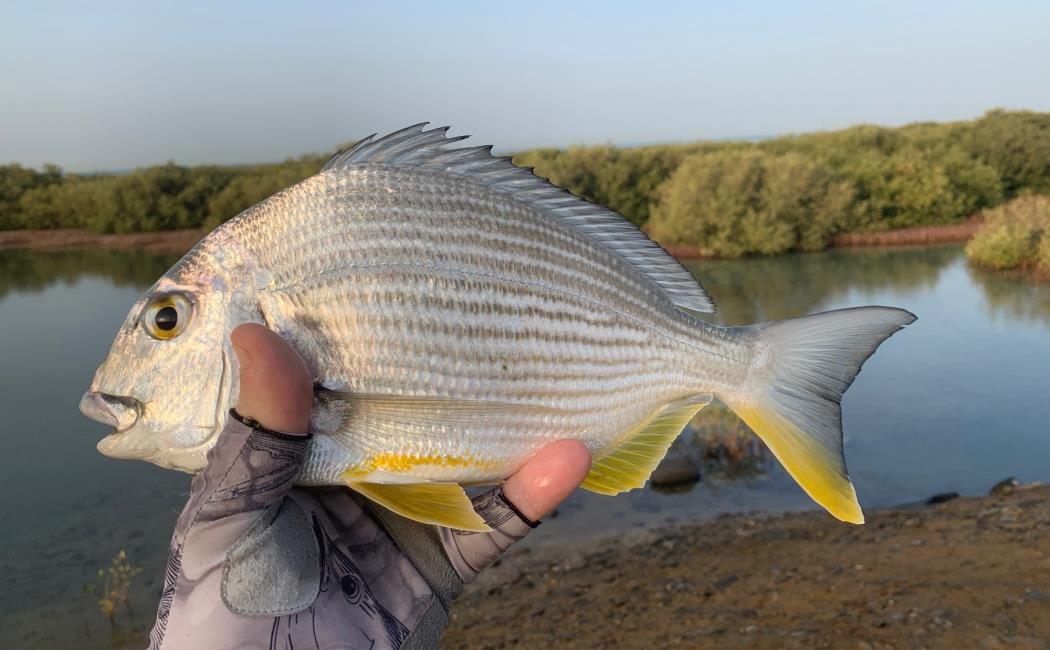A tight line and a keen eye led KAUST’s Vice President for Research to spot a new species of bream now named in honor of two beloved women.
Avid fishers from the KAUST shoreline know well the three common species of Red Sea sea bream: the goldsilk or picnic sea bream (Acanthopagrus berda), the double-bar sea bream (Acanthopagrus bifasciatus) and the haffara sea bream (Rhabdosargus haffara). And now they know one more thanks to the Vice President for Research Donal Bradley, physicist and “piscatorial ichthyologist” (studier of fish by fishing).
“I had been catching both Acanthopagrus species (mostly A. berda) for a while by bait fishing with shrimp and sometimes squid or bread,” explains Bradley. “I noticed that some of the fish I caught, although superficially similar to A. berda, had some distinctly unique features.”
The “new fish” had a more shallowly sloping forehead, a distinct black patch on the rearward edge of the gill cover, a more yellowish pectoral fin and a paler body color. Bradley was not able to find it in any fish-guide books or websites.
In February 2021, Bradley asked marine scientist Mike Berumen if this could be a new species, providing him with a fin clipping from the “new fish” and, for comparison, a clipping from a standard A. berda caught at the same time.
Berumen’s team undertook a genetic analysis, sparking a more detailed study, with results that were sufficiently interesting to prompt an email thread among Berumen’s team with the subject line: “I hope the VP hasn’t eaten that fish.”
“I hope the VP hasn’t eaten that fish.”
Unfortunately, he had.
Bradley redoubled his fishing efforts hoping to catch some specimens of what was now considered a new species.
“Catching more samples proved difficult for a while, prompting my younger daughter to suggest to my wife that I had probably found an unrecognized species and also made it extinct,” says Bradley.
Read more at KAUST Insight.


